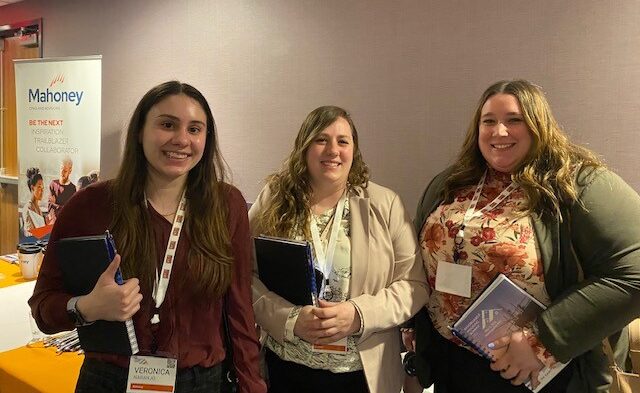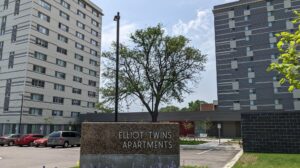REST Easy with Mahoney July 2022
Important News for the Affordable Housing Industry

AFR

Upcoming Deadlines

Legislative Updates
Applicable Federal Rates for July 2022
| Annual | Monthly | |
| Short-term | 2.37% | 2.35% |
| Mid-term | 2.99% | 2.95% |
| Long-term | 3.22% | 3.17% |
Applicable Federal Rates for August 2022
| Annual | Monthly | |
| Short-term | 2.88% | 2.84% |
| Mid-term | 3.15% | 3.11% |
| Long-term | 3.35% | 3.30% |
Low Income Housing 9%
Round 1 Common Applications
Minnesota Housing Dakota County CDA Washington County CDA 7/14/2022 City of Minneapolis 7/21/2022 City of St. Paul 8/2/2022
LCDA and TOD funding 8/15/2022
If you have not submitted your 8609 package please do so as soon as possible to ensure receipt of Form 8609 by the 9-15-22 tax return due date if claiming credit in 2021.
Ensure your buildings were leased-up by 6-30-22 if you are taking advantage of IRS Notice 2022-5 for taking credits in 2021
Federal Legislation Updates
by: Alex Cho
- Financial incentives to state and local governments to remove exclusionary land use and zoning constraints that limit the development of high-density housing.
- New federal financing tools for buyers and manufacturers of manufactured housing.
- Expansion of LIHTC and the creation of Neighborhood Homes Tax Credit.
- Reducing finance risks (interest rate risk, loan resizing risk, etc.) and transaction costs by providing a single construction to permanent multifamily loan to multifamily housing developers.
- Use of American Rescue Plan’s State and Local Fiscal Recovery Funds to support development of multi-family or single-family affordable housing, preservation of existing affordable housing, permanent supportive housing, and rental subsidies.
- Increase equity investment in LIHTC deals by Fannie Mae and Freddie Mac.
- Harmonization of federal fund requirements across different programs.
- Finalize Income Average regulations by the end of September 2022.
On May 26, 2022, Congressional leaders submitted a letter to the IRS and Treasury to finalize the average income test rule. They urged them to ensure that the final rule is user friendly to help support affordable housing.
Minnesota Legislation Updates
by: Alex Cho
On January 18, 2022, Governor Walz released a $2.734 billion bonding bill.

Extended IRS Tax Deadlines for Qualified Low-Income Buildings
by Mary Corwin
Qualified low-income buildings must comply with a number of tax deadlines. However, during a federally declared disaster many of these deadlines may be extended by the IRS. A federal disaster was declared on March 13, 2020 which provided relief from tax deadlines to Americans who have been adversely affected by the COVID-19 emergency. What are the IRS deadline extensions and how do they affect me?
EXTENDED DEADLINES 10% Test for Carryover Allocation § 42(h)(1)(E)(ii)
| Original Deadline | Extended Deadline | |
| Timeframe 1 | On or after 4/1/2020 and on or before 12/31/2020 | Original deadline plus 2 years |
| Timeframe 2 | On or after 1/1/2021 and on or before 12/31/2022 | 12/31/2022 |
§42(e) 24 Month Minimum Rehabilitation Expenditure Period § 42(e)(3)(A)(ii)
| Original Deadline | Extended Deadline | |
| Timeframe 1 | On or after 4/1/2020 and on or before 12/31/2021 | Original Deadline plus 18 months |
| Timeframe 2 | On or after 1/1/2022 and on or before 6/30/2022 | 6/30/2023 |
| Timeframe 3 | On or after 7/1/2022 and on or before 12/31/2022 | Original Deadline plus 12 months |
| Timeframe 4 | On or after 1/1/2023 and on or before 12/30/2023 | 12/31/2023 |
Placed in Service Deadline 42(h)(1)(E)(i)
| Original Deadline | Extended Deadline | |
| Timeframe 1 | 12/31/2020 | 12/31/2022 |
| Timeframe 2 | 12/31/2021, 10% original deadline before 4/1/2020 | 12/31/2022 |
| Timeframe 3 | 12/31/2021, 10% original deadline after 4/1/2020 and before 12/31/2020 | 12/31/2023 |
| Timeframe 4 | 12/31/2022, 10% original deadline in 2021 | 12/31/2023 |
Reasonable Period for Restoration or Replacement in the Event of Casualty Loss § 42(j)(4)(E)
| Original Deadline | Extended Deadline | |
| Timeframe 1 | Original Reasonable Restoration Period ends on or after 4/1/2020 | 18 months after 4/1/2020 but not beyond 12/31/2022 |
| Notes | *** The Housing Agency may require a shorter extension, or no extension at all |
Extension to Satisfy Occupancy Obligations § 42(f)(3)(A)(ii)
| Original Deadline | Extended Deadline | |
| Timeframe 1 | 12/31/2020 | 6/30/2021 |
| Timeframe 2 | 12/31/2021 | 6/30/2022 |
| Timeframe 3 | 12/31/2022 | 6/30/2023 |
If your development is projected to finish lease-up in early 2023, you may be able to use this relief to take credits early in 2022.
Correction Period § 1.42-5
| Original Deadline | Extended Deadline | |
| Timeframe 1 | On or after 4/1/2020 and on or before 12/31/2021 | Extended by a year, but not beyond 12/31/2022 |
| Notes | *** The Housing Agency may require a shorter extension, or no extension at all |
OPERATIONAL WAIVERS
Compliance Monitoring – Review of Tenant Files
| Requirement on Hold | Resume Requirement | |
| Review of Tenant Files | 4/1/2020 through 12/31/2021 | 1/1/2022 |
| Reasonable Notice under § 1.42-5(c)(2)(iii)(C)(3) | 4/1/2020 through 12/31/2022 | 1/1/2023 |
Compliance Monitoring – Physical Inspections
| Requirement on Hold | Resume Requirement | |
| Physical Inspections | 4/1/2020 through 6/30/2022 | 7/1/2022 |
| Reasonable Notice under § 1.42-5(c)(2)(iii)(C)(3) | 4/1/2020 through 12/31/2022 | 1/1/2023 |
Common Areas and Amenities
| Requirement on Hold | Resume Requirement | |
| Physical Inspections | 4/1/2020 through 12/31/2022 | 1/1/2023 |
| Notes | ***Must be in response to the COVID-19 pandemic and not other noncompliance with § 42 |
For questions on how the extensions in Notice 2022-05 affects your LIHTC or tax-exempt bond property, please contact the Real Estate Solutions Team at Mahoney.

Qualifying Tenants in Place on the Acquisition Date for Acquisition/Rehab Projects
by Mary Corwin
Your project received an allocation of tax credits that you plan to use to rehabilitate an existing building. What should you be thinking about from the compliance angle? Can the in place tenants qualify the units for tax credits?
Here are some dates we will use in below examples:
- Acquisition date is June 1, 2020
- Rehab placed in service date is April 30, 2021
- Household A moved in on May 1, 2020
- Household B moved in on June 1, 2015
When a building is purchased and operating with tenants currently living in it, the building is ready for its intended purpose and the acquisition date becomes the date tax credits can begin. Using our example dates, tax credits could begin June 1, 2020. However, if the rehabilitation is not complete until 2021, the acquisition credits are deferred one year. In this case both acquisition and rehab credits will begin in 2021 and any tenant qualified up until January 31, 2021 will have credits on that unit for the entire year of 2021.
When you purchase an existing building, most of the units will be occupied. For all occupied units, the owner has 120 days before and after the acquisition date to complete tenant income certifications. If completed within the 120 days, the units will be income certified as of the acquisition date.
There are a couple of rules that apply to income certifications for acq/rehab deals – typically called the “Safe Harbor” and “Grandfathering.”
Safe Harbor Rule
What happens if you purchase an existing building in 2020 and a household’s income goes over the income limit by the first year of the credit period (2021)? Do you have to evict that household? Thanks to IRS Revenue Procedure 2003-82 the answer is no.
If Household A’s income was certified and below the income limit as of June 1, 2020, but it increased in December 2020 above the income limit, that household would still be considered a low-income unit as of the first year of the credit period, 2021, as long as the rent is properly restricted. If the household is over the income limit, the next available unit rule is applied.
Grandfathered Tenants
What happens with household in place on the acquisition date if the existing building you purchased was previously a tax credit project and you plan to rehabilitate the project using a new allocation of LIHTCs, also known as a re-syndication?
In this case, the 8823 Guide states that “Households determined to be income-qualified for purposes of the IRC §42 credit during the 15-year compliance period are concurrently income-qualified households for purposes of the +30-year extended use agreement. As a result, any household determined to be income qualified at the time of move-in for purpose of the extended use agreement is a qualified low-income household for any subsequent allocation of IRC §42 credit.”
This means that Household B would be “grandfathered in” (qualified unit) even if they are over the income limit as the new acquisition date. If Household B was over the income limit, the household could remain in its unit, but would be subject to the next available unit rule.
A couple of caveats:
First, it should be noted that in the case of a re-syndication, some investors or state agencies do not follow this rule and may still require an owner to prepare new income certifications for all existing tenants.
Second, an owner will most likely have to test each household for student status, as the state agency may not have required that during the extended use period.

What’s Happening at MDS?
by Andy Hughes
It’s Application Season!
MDS is gearing up for a busy application season, with applications planned for projects to Minnesota Housing and various other project funders in July and August for tax credits, deferred loans and other resources. MDS is working with a number of clients on a diverse set of projects, including existing acquisition/rehabilitation and new construction projects in the Metro and Greater Minnesota. Outside of the busy application season submittals, MDS continues to work on other projects include refinances, project financial underwriting and due diligence and other activities for clients.
MDS Hiring News
MDS is also pleased to announce its recent hiring of a real estate project management intern! Kimmy Kistan started at MDS in early June and will assist in preparing financing applications, project due diligence and reviewing new opportunities. Kimmy is a local college student and will work at MDS full-time through the summer.
If you would like more information about MDS and its services, please contact Andy Hughes at MDS.

Real Estate Solutions Team
Employee Spotlight
by Anjelica Smith
I started an internship in January 2022 with Mahoney and their Real Estate Solutions Team. I learned so much about low-income housing and enjoyed doing so. After the internship was over, I accepted a full-time position as an Associate Accountant with the same team. I will be graduating with a Master of Science in Accounting from the University of Michigan in August of 2022. I will begin studying for the CPA exam a little before I graduate in June.
Now that the weather has warmed up, we really enjoy being outside. Whether we are out on the lake soaking up the sun or at the dog park watching our dog roll in the mud. We recently walked the trails around Minnehaha Falls. It was gorgeous and an enjoyable walk. I am excited to explore more of the Twin Cities this summer.
* Photo credit in this section to Anjelica Smith

Out and About
with The Real Estate Solutions Team
by Deanne Thompson
The Real Estate Solutions Team at Mahoney has been out and about attending various affordable housing events in our community. Please take a look and see where we have been recently.
Members of the Real Estate Solutions, Tax and MDS teams attended the summit recently. This was an impactful opportunity to focus on current topics affecting developers and investors in the real estate community.
Members of the Real Estate Solutions, Tax and MDS teams attended the summit recently. This was an impactful opportunity to focus on current topics affecting developers and investors in the affordable housing community.
Assurance and Real Estate Solutions Team members attended an early breakfast for Project for Pride in Living Inc. This was a terrific way to support the important mission and impact this provider of affordable housing has on our local community.
Real Estate Solutions Team members had a chance to tour this wonderful new affordable housing project in St. Paul.

Real Estate Solutions Team Partner Tom Johnson attended the open house for the rehabilitated Elliot Twins Apartments complex in Minneapolis in June 2022.
This rehabilitation project has helped it’s residents by adding new windows, air conditioning, energy efficient roofing, HVAC and a connection area between the two buildings.
* Photo credit to Tom Johnson
Members of the Real Estate Solutions and Tax teams attended this inaugural event in June 2022 to network and learn about how to develop and empower women working in the affordable housing industry.

Members of the Real Estate Solutions team at Mahoney attended the National Council of State Housing Agencies (NCSHA) 2022 Housing Credit Connect Event in June 2022 in Chicago, Illinois.
This was an opportunity for state housing credit allocating agencies to meet with others working in the affordable housing Industry. Mahoney Real Estate Solutions and Tax team members shown above attended workshops to learn about the latest industry news regarding state tax credits, and had the opportunity to network with many housing agencies and other industry leaders in their field.
* Photo credit to Tom Johnson
ADDRESS
10 River Park Plaza, Suite 800
Saint Paul, MN 55107
(651) 227.6695
Fax: (651) 227.9796
info@mahoneycpa.com
© 2024 Mahoney | Privacy Policy
Mahoney Ulbrich Christiansen & Russ, PA


